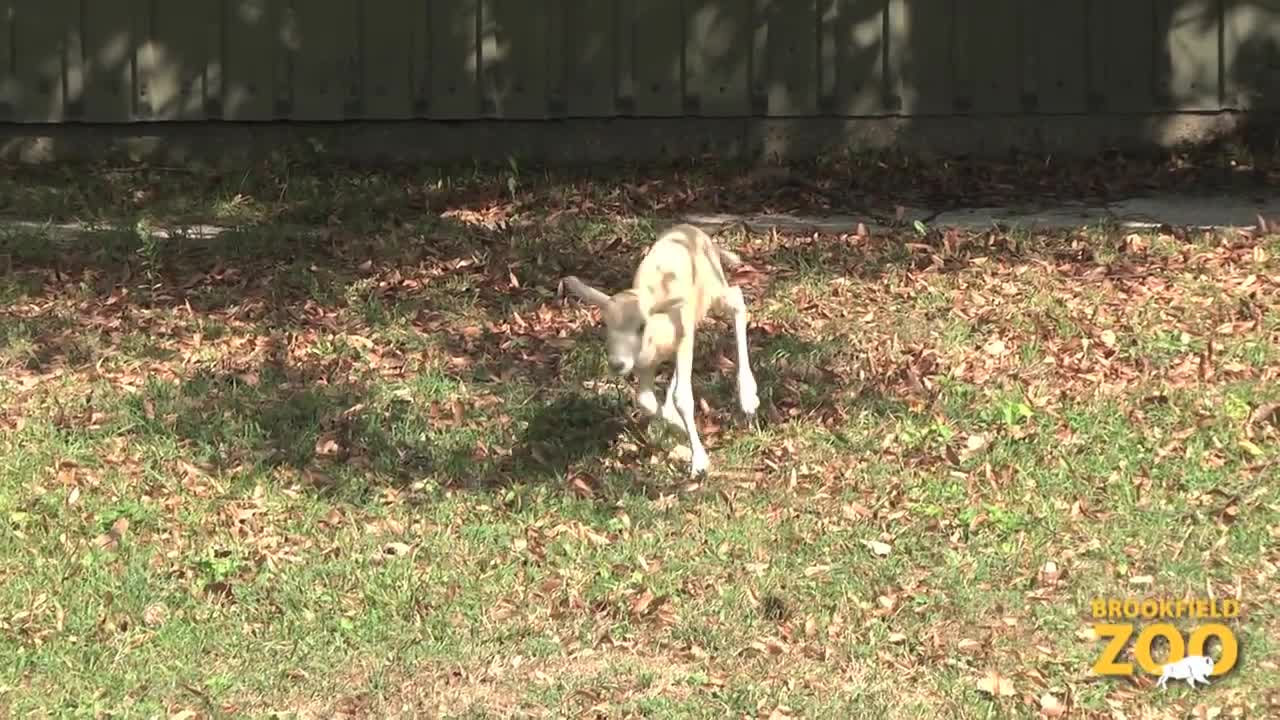Premium Only Content

New Addax Calves at Brookfield Zoo
Over the past three months the addax population has nearly doubled at Brookfield Zoo with the birth of four male calves. The most recent one was born September 4 to Mona, 15. The calf can be seen with the rest of the herd, including his three half-brothers who were born on June 7, June 24, and August 11.
All the births are important for the species, which is near the brink of extinction in the Sahara deserts of Africa. Nearly 200 addax live in 19 accredited North American zoos, with about 300 individuals living in the wild, so every addax birth is crucial to saving these beautiful antelope.
The pairing of the four adult females—Sara, 4; Martha, 13; Mali, 5; and Mona—with Winston, 12, the sire, was based on a breeding recommendation from the Association of Zoos and Aquariums' Addax Species Survival Plan (SSP). An SSP is a cooperative population management and conservation program for the species in North American zoos. The program manages the breeding of addax in zoos to maintain a healthy, self-sustaining population that is both genetically diverse and demographically stable. The calves will play a vital role in its species' survival. Brookfield Zoo has exhibited addax antelope since 1935 and has contributed 144 calves to the North American population since 1941, when it had the first calf born in the United States.
Once abundant, addax are now found mostly in Niger, according to researchers, with roughly two-thirds of the remaining wild population living there. Only a handful of free-roaming addax are found in countries like Chad, Mauritania, and possibly Mali. However, there is hope for the species thanks to an international collaborative effort. The Chicago Zoological Society, which manages Brookfield Zoo, is one of more than 40 organizations worldwide that have provided support for the reintroduction of zoo-born addax into fenced reserves in Tunisia.
Addax are the most desert-adapted antelope, with wide hooves that are extra large and spread out, perfect for staying on top of loose sand. Their legs are shorter than those of most antelope, giving them a low center of gravity and keeping them steady—even when the sand shifts under foot. They get nearly all the moisture they need from the sap of vegetation and from dew, going almost their entire lives without drinking water at all. When vegetation is not available, they live off the water stored in their body fat. Addax have some of the most impressive horns of all antelope. In older individuals, they can spiral almost three turns and extend nearly three feet. Addax are one of a group of species called "horse-like antelope," which are unusual in that the females have horns as long as those of the males. The calves are born with "horn buds" which begin to grow into horns after the first few weeks.
-
 LIVE
LIVE
Badlands Media
20 hours agoDevolution Power Hour Ep. 383
16,534 watching -
 LIVE
LIVE
DLDAfterDark
3 hours ago $0.02 earnedDLD Live! Feat. Red Dawn Readiness! Glock FRT's - Striker Fire Safety Concerns - ACE Trigger
267 watching -
 LIVE
LIVE
BlackDiamondGunsandGear
2 hours agoAre ALL Striker Fired Pistols UNSAFE? // After Hours Armory
752 watching -
 LIVE
LIVE
SpartakusLIVE
6 hours ago#1 Saturday Spartoons on RUMBLE PREMIUM
3,733 watching -
 1:04:59
1:04:59
Man in America
7 hours ago“Summoning the Demon” — The AI Agenda Is FAR WORSE Than We Know w/ Kay Rubacek
17.8K17 -
 LIVE
LIVE
Tundra Tactical
5 hours ago $0.04 earned🎯💥 The World’s Okayest Gun Show 🔫😂 | LIVE Tonight on Rumble!
176 watching -
 3:36:03
3:36:03
Mally_Mouse
1 day ago🌶️ 🥵Spicy BITE Saturday!! 🥵🌶️- Let's Play: Tower Unite!
30.1K1 -
 58:59
58:59
MattMorseTV
5 hours ago $0.95 earned🔴Trump just BROKE Newsom.🔴
49.3K56 -
 18:14
18:14
Her Patriot Voice
5 hours agoWho Is WORSE for NYC: Trump Girl or Socialist?
24.2K23 -
 3:39:42
3:39:42
SavageJayGatsby
5 hours agoSpicy Saturday with Mally! | Road to 100 | $300 Weekly Goal for Spicy Bites!
31.3K1